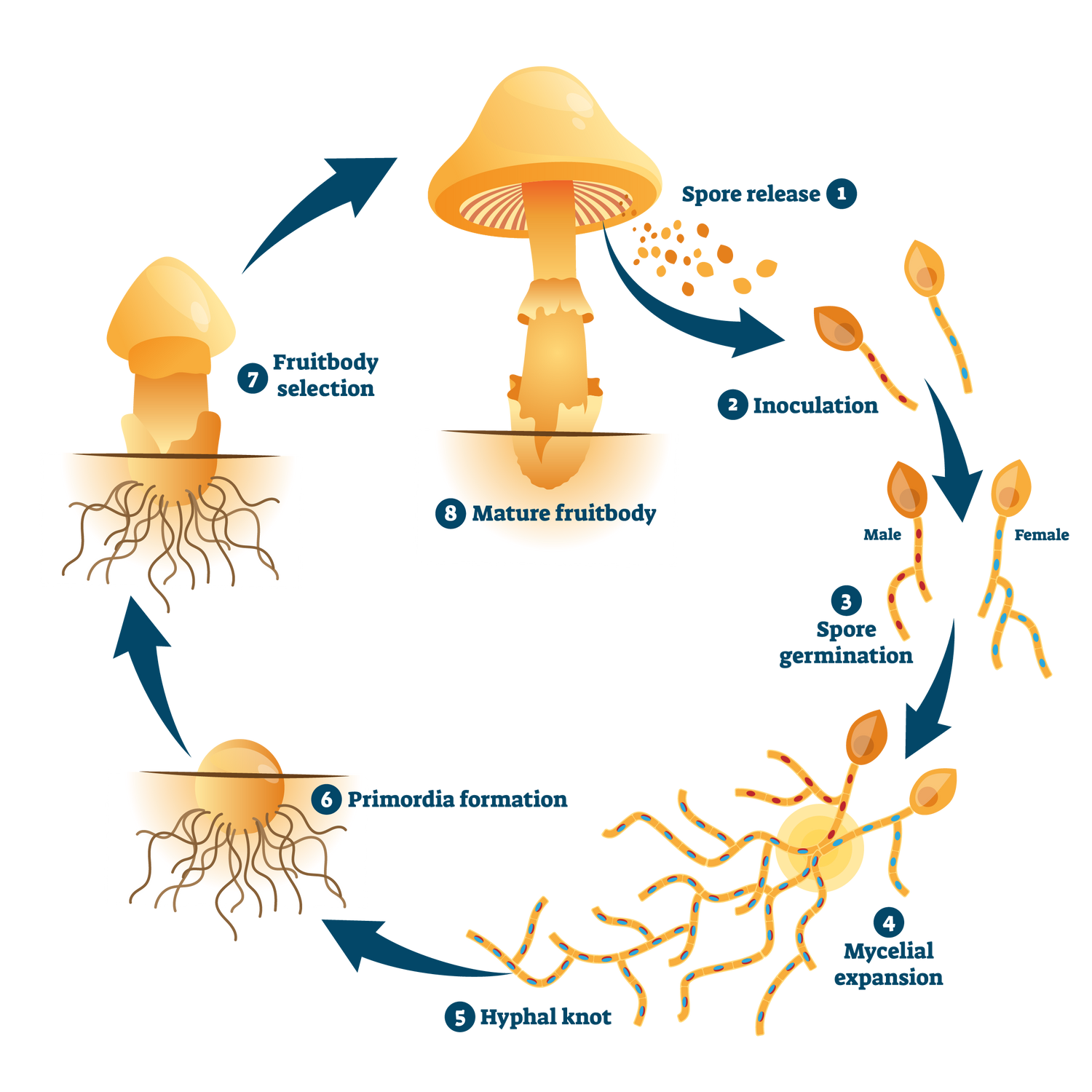
A Mushrooms LIfecycle
Mushrooms are a fascinating organisms that have a unique lifecycle. Unlike most plants, which grow from seeds, mushrooms reproduce by spores. Spores are tiny, dust-like particles that contain the mushroom's genetic material. When conditions are right, the spore germinates and grows into a new mushroom.
mushroom terminology
Let's Talk Mushrooms
Mycelium:
If compared to plants, mycelium is the roots of the mushroom. Mycelium expands through soil/substrate and is responsible for absorbing water and nutrients for growth.
Substrate
The base material that a mushroom lives on. For a plant the substrate would be soil. However, mushrooms grow on many different materials. The mushrooms we cultivate are naturally found growing on decaying hardwood trees. To replicate this, the substrate (growing medium) needs to have similar nutrients available to resemble the mushrooms natural environment. We typically use hardwood sawdust which is a waste product of the construction industry mixed with a nutrient supplement such as soybean hulls, which is a waste product of soybean production.
Innoculation
Is when mycelium is first introduced to a new sterile growing medium. When we make grain spawn or substrate it begins by having no mycelium on it. By introducing the mycelium to the grain spawn/substrate we are inoculating it.
Incubation
The incubation process is the time required for the mycelium to expand its network within the grain spawn/substrate, right before full colonization.
Full Colonization
Once the mycelium has completely covered the substrate and can not expand further. This signals to the farm that it is ready for fruiting.
Fruiting
The stage of mushroom growth when the mycelium is exposed to oxygen and humidity which initiates mushroom growth.
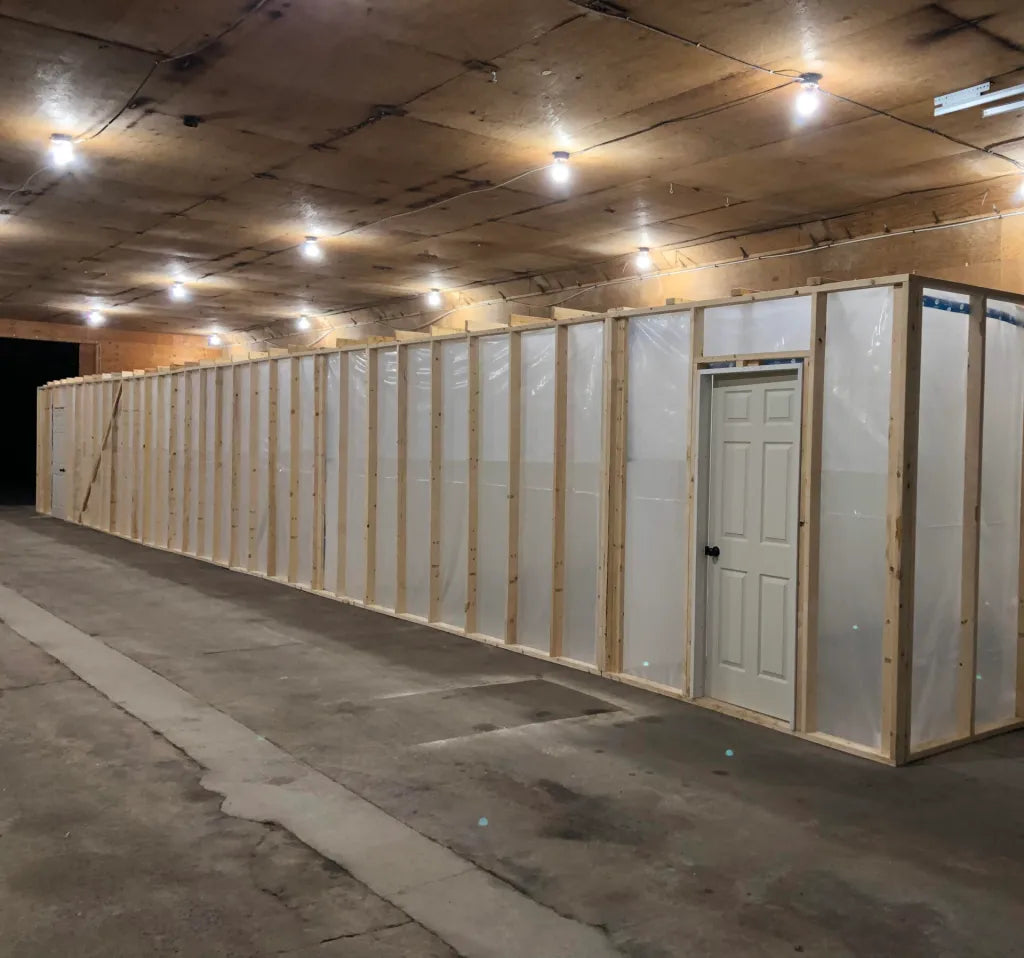
Indoor Mushroom Cultivation
A 20' x 10' space can yeild up to
2000 lbs per month. At $16/lb thats a potential $32,000 harvest. We'll support you through the whole process!
You Can farm mushrooms too
Our Mushrooms
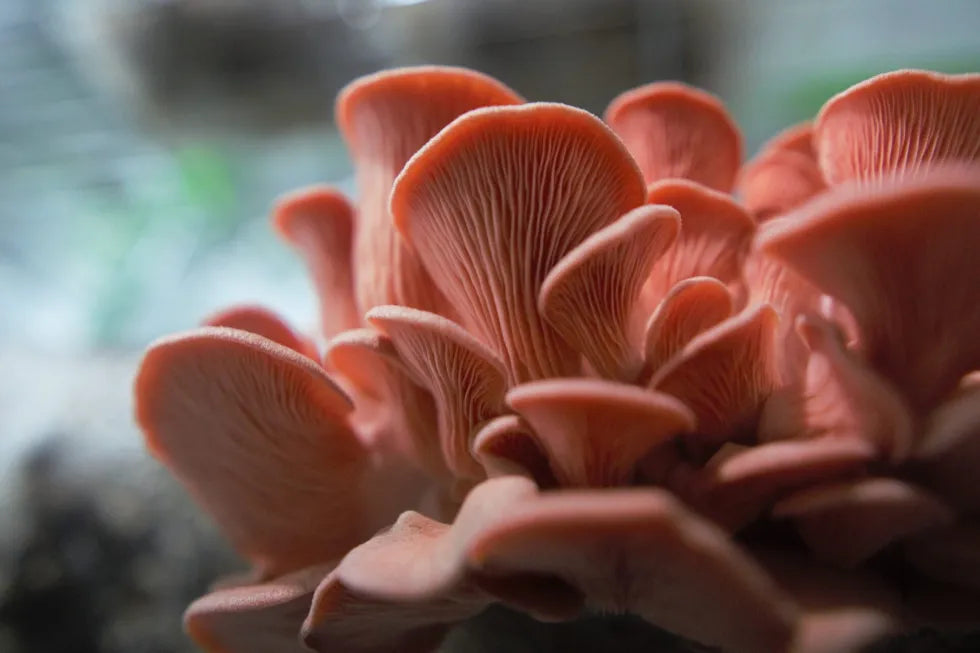
Pleurotus djamor
Pink Oyster (Pleurotus djamor) is a visually appealing and delicious mushroom. It is a great addition to any recipe that calls for mushrooms and is frequently used as a bacon substitute when cooked to a crisp. It does lose its pink colouring when cooked but that does not take away from its delicious flavour and nutritional value.
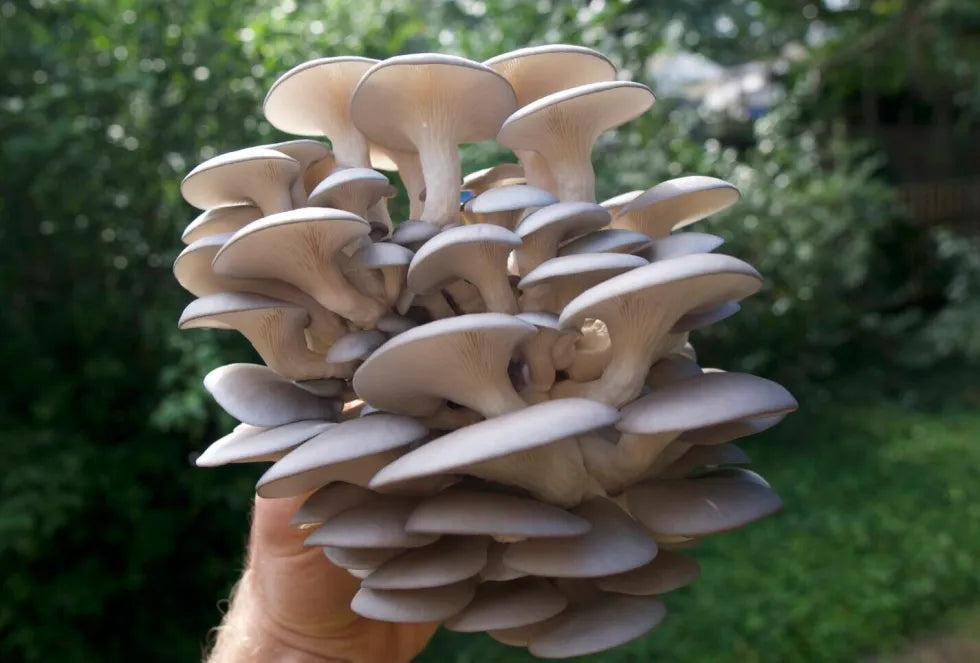
Pleurotus ostreatus columinus
Blue Oyster’s (Pleurotus ostreatus columinus) is a mushroom commonly found in North American hardwood forests. They grow naturally on decaying logs and when young, they posses a dark blue cap that turns grey as the mushroom matures. Like most oyster mushrooms this species has big meaty caps that are great in stir fry’s, soups, and pasta dishes.
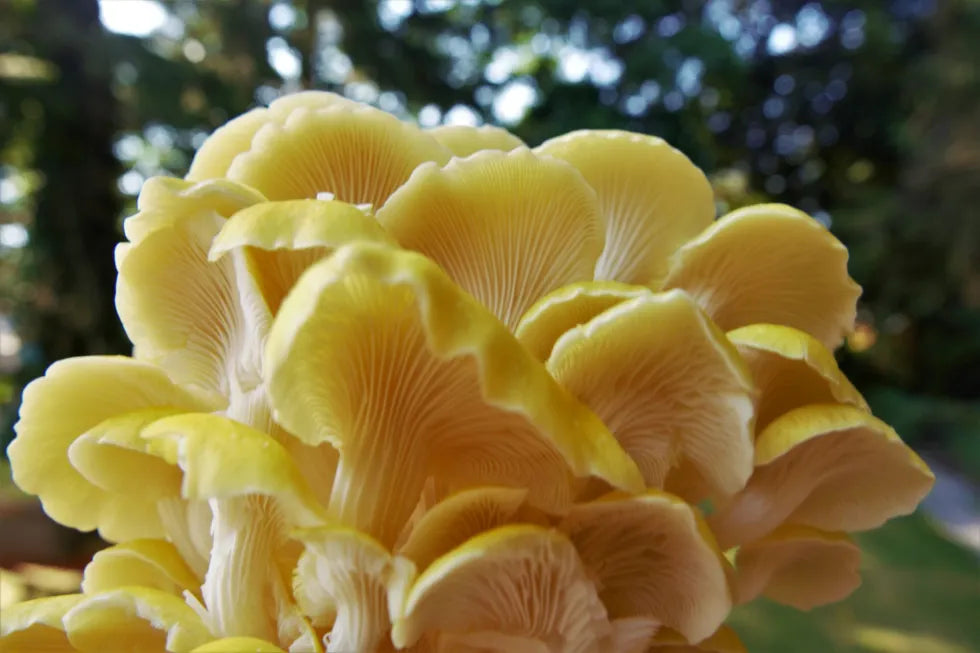
Pleurotus citrinopileatus
Yellow oysters (Pleurotus citrinopileatus) grow smaller caps compared to other oyster mushroom but their vibrant yellow colour makes them very visually appealing. This species is native to Asia but grows naturally on hardwood tree’s like oak and beech. When cooking, ensure to cook thoroughly because they have a bitter taste when undercooked but resemble a nutty taste when cooked properly. Unfortunately, cooking makes this mushroom loose its brilliant yellow colour.
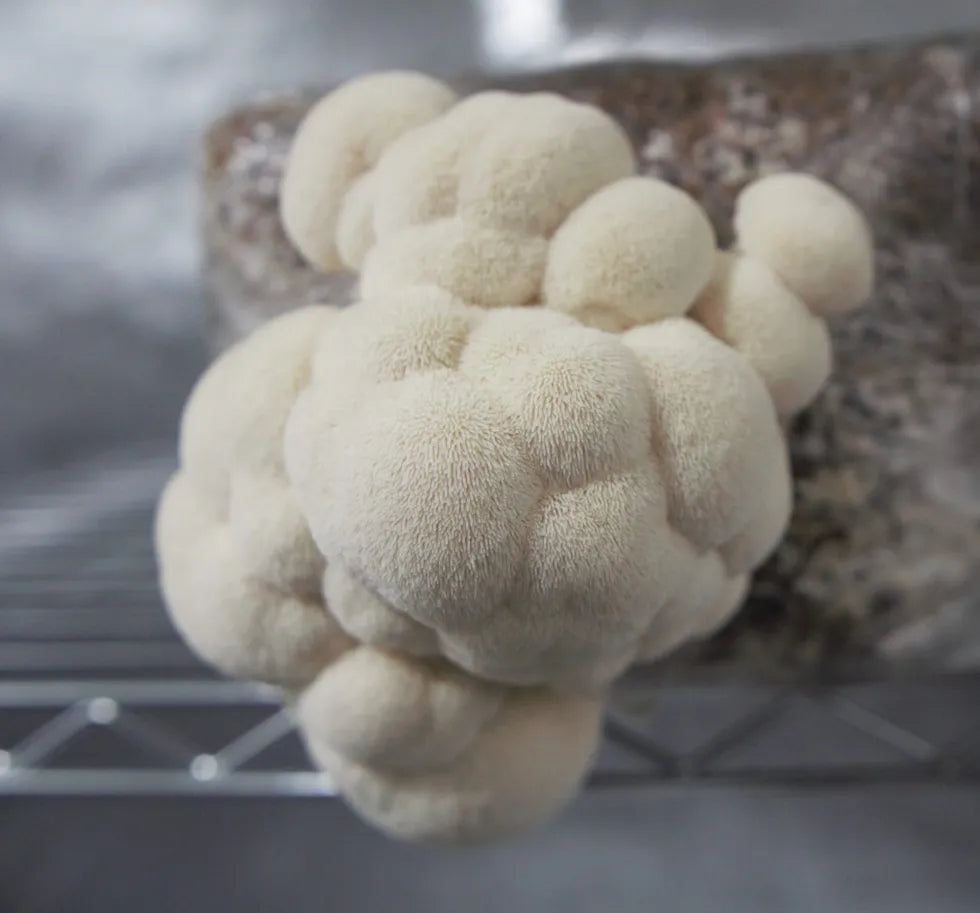
Hericium erinaceus
Lion’s Mane (Hericium erinaceus) is both delicious and medicinal. It is well known for its ability to reduce the affects of dementia, anxiety and depression. It contains beneficial compounds that help promote nerve growth which improves cognitive function. In the kitchen it is most commonly used as a seafood substitute due to its texture and taste which resembles crab and lobster when cooked with butter and garlic.
